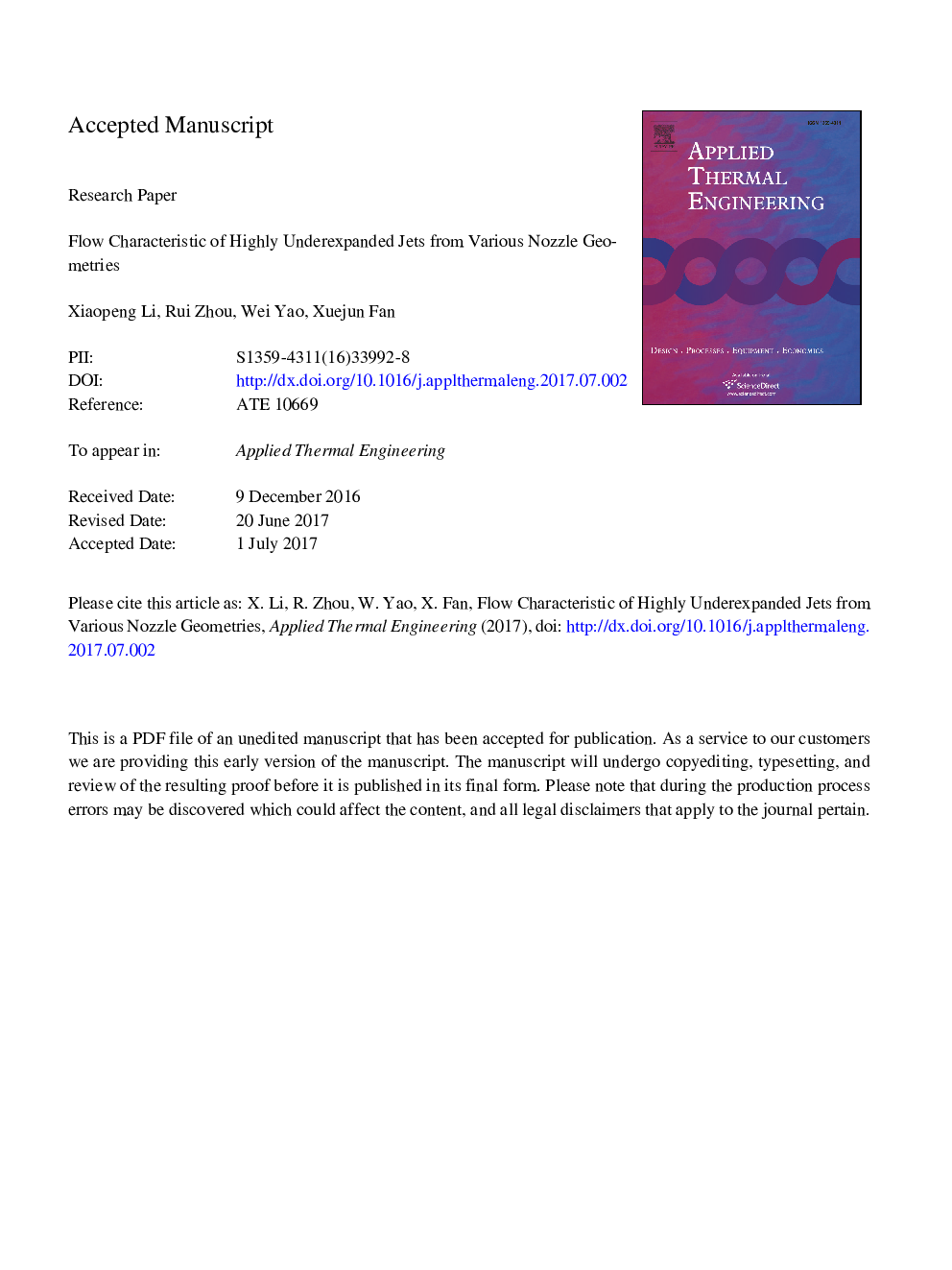| Article ID | Journal | Published Year | Pages | File Type |
|---|---|---|---|---|
| 4991181 | Applied Thermal Engineering | 2017 | 41 Pages |
Abstract
Flow characteristics of highly underexpanded jets at the same nozzle pressure ratio of 5.60 but issuing from four different nozzles, i.e., the circular, elliptic, square, and rectangular nozzles, are studied using large eddy simulations. The results show that the square jet penetrates fastest, although the turbulence transition is similar for different jets. The penetration rates of different jets show the similar linear dependency on the square root of time, but the penetration constant Î for the noncircular jets deviates more than 5% from the theoretical value of 3.0. The circular and square jets both correspond to a three-dimensional helical instability mode, while the elliptic and rectangular jets have a two-dimensional flapping instability in their minor axis planes. All the jets undergo a Mach reflection forming the Mach disk, but the Mach disk in the elliptic and rectangular jets is not easily visible. The intercepting shocks in the square jet originate at the four corners of the nozzle exit at first, while the formation of the intercepting shocks is only observed in the major axis planes for the elliptic and rectangular jets. In addition, great differences are observed on the mixing characteristics between different jets. In particular, the elliptic jet penetrates slowest, has the shortest length of jet potential core, and takes the largest mixing area.
Related Topics
Physical Sciences and Engineering
Chemical Engineering
Fluid Flow and Transfer Processes
Authors
Xiaopeng Li, Rui Zhou, Wei Yao, Xuejun Fan,
